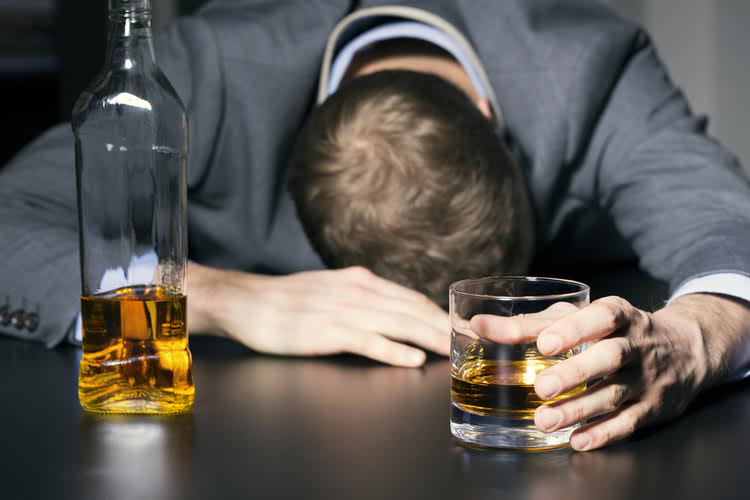This might mean brand-new friends replacing old ones or having sets of separate friend groups. Your child might also show even more secrecy over their mobile devices and social media accounts. Waiting, in other words, seemed to have encouraged more responsible behaviour when Americans were permitted to purchase drinks legally. The consequences may not be immediately evident in cognitive tests; in a young brain, the regions responsible for problem solving can work a little bit harder to make up for the deficits.

Among Persons Aged 18-20 Years
It may be that their new friends are encouraging this negative behavior. Kids and teens are more likely to binge what is Oxford House drink and are more vulnerable to developing a problem with alcohol than adults. Experts believe this may be because the pleasure center of a teen’s brain matures before their capacity to make sound decisions. In other words, they’re able to experience ”pleasurable” effects from alcohol (such as suppressing anxiety or improving mood) before they’re able to make the right choices about when and how much to drink. This can lead them to do things that are embarrassing, dangerous, or even life-threatening to themselves or others. You might find it hard to recognize the signs of underage drinking apart from normal behaviors.
What are the signs of alcoholism in teenagers?
But starting to drink when you are a teenager increases the risk of addiction. Teens who start drinking alcohol before age 15 are five times more likely to develop a later addiction to alcohol than those who begin drinking at age 21 or older. Staffqualifications vary widely, from high school to graduate degrees, andthere is often a lack of adequate training in co-occurring disorders. Inaddition, many programs do not address all of the numerous factors thataffect the adolescent’s environment, including peer groups, the juvenilejustice system, and the community.
Age groups most affected by alcohol addiction
For adults, accessible and affordable treatment options, including therapy, support groups, and medication-assisted treatment, are essential for recovery. By acknowledging the diverse ways alcohol addiction manifests across age groups, we can develop more effective strategies to address this widespread public health concern. For more than three decades the Substance Abuse and Mental Health Services Administration (SAMHSA) has collected data to advance the behavioral health of Americans, reporting on key substance use and mental health indicators. Among 12- to 20-year olds, there were 2.6 million fewer underage drinkers and more than 2.1 million fewer binge drinkers since 2015.
Or you may despair at the relentless anger or indifference your teen displays towards you. However, if you feel that your child will be exposed to underage drinking, finding a way to talk to them about alcohol can be crucial in either preventing them from starting or curbing any existing alcohol use. Films and TV can make it seem that every “cool”, independent teenager drinks.
The Best Online Therapy Platforms
- Alcoholism manifests as a relentless and unhealthy obsession with consuming alcoholic beverages, often to the detriment of physical, mental, and social well-being.
- Ondansetron (Zofran) may reduce alcohol cravings in people whose problem drinking began before they were 25 years old.
- Although rates of drinking and binge drinking have been going down over recent decades, national surveys show that among youth and young adults, one in five report drinking alcohol in the past 30 days, and one in 10 report binge drinking.
- At some point, many teens are pressured to drink alcohol by friends or peers.
This behavior poses significant risks, including impaired brain development, memory problems, and an increased risk of addiction. It can also lead to risky behaviors such as unsafe sex, reckless driving, and violence. The 2024 Monitoring the Future study found the prevalence of alcohol consumption among America’s youth continued a long-term decline that has taken place over the past two decades. Binge drinking statisticsshow thatbinge drinking among teensis a concern.
- Inpatient rehab provides a structured environment that eliminates triggers and focuses on recovery.
- The prevalence of teen alcoholism in the United States is a significant public health concern, with alarming statistics highlighting the extent of the problem.
- One study found that people who regularly had 5 or more drinks in a row starting at age 13 were much more likely to be overweight or have high blood pressure by age 24 than their nondrinking peers.
- Family involvement usually includes educationabout treatment and how families can support the treatment process.Sometimes it involves having family sessions at the agency or evenin the home that address family environment or structure.
- And if you have reason to believe your child has started drinking while underage, it’s not too late to talk to and help them.

At times, motivation to participate is a major barrierfor adolescents, who often have other priorities. Motivationalenhancement techniques and motivational interviewing are importantand clearly have to be a part of engagement (Barnett, Monti, and Wood, 2001;Winters,1999). Vouchers to promote attendance and the completion ofactivities allow program providers to reinforce positive behavior(Drug Strategies,2003). Group counseling is a key therapeutic techniquethat includes those with alcohol and drug use disorders who arefurther along in the recovery process; they pass on their knowledge,experience, and values to newer patients. Participants study each ofthe Twelve Steps and are referred to Alcoholics Anonymous andNarcotics Anonymous meetings as part of their therapy aftertreatment to prevent relapse (Winters and Schiks, 1989).
Where to learn more and find support
Witnessing your child struggle with a drinking problem (also known as “alcohol use disorder”) can be as heartbreaking as it is frustrating. Your teen may be falling behind at school, disrupting family life, and even stealing money to finance their habit or getting into legal difficulties. Drinking problems affect families all over the world from every different background. Kids face a huge amount of stress as they navigate the teenage years. Many turn to alcohol to relieve stress, cope with the pressures of school, to deal with major life changes, like a move or divorce, or to self-medicate a mental health issue such as anxiety or depression.
Frequency of Drinking Among Youth

This allows for continuous medical supervision of health professionals and access to various therapies. On the other hand, many people enjoy teenage alcoholism the taste of alcoholic beverages. And when consumed by adults in small to moderate amounts, especially with meals, alcohol may be good for the heart.
